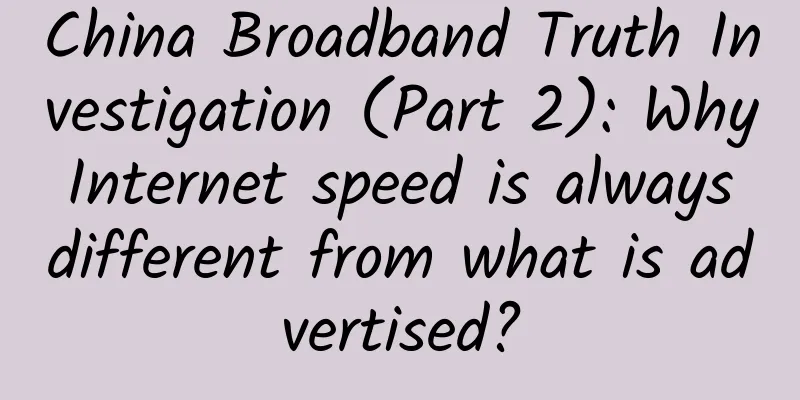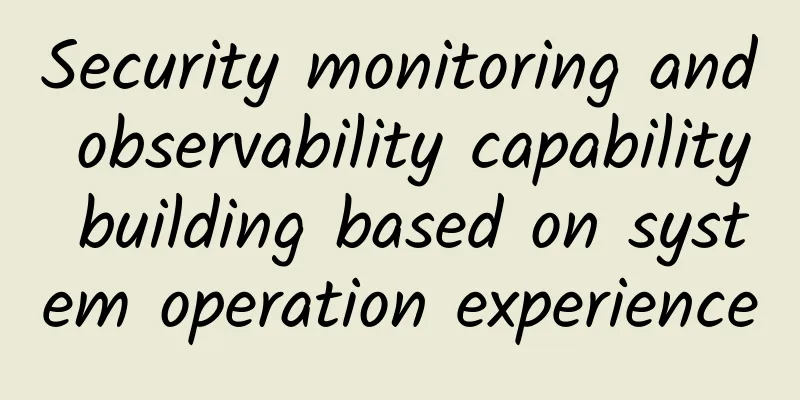China Broadband Truth Investigation (Part 2): Why Internet speed is always different from what is advertised?

|
No matter which operator you apply for broadband service, you may find that the broadband you use does not reach the 50M, 100M or 200M speed promised by the operator. At this time, you will feel cheated and wonder if you have applied for "fake broadband". In fact, this question can be viewed from two perspectives. Failure to convert units leads to misunderstanding If we go to a business hall to apply for 100M broadband, the 100M here refers to 100 megabits per second (100Mbps), and the speed test software we use usually shows the download speed, which is measured in megabytes per second (Mb/s). The relationship between the two is 1:8, which means that 100M broadband should correspond to a download speed of 12.5Mb/s per second, 50M broadband corresponds to 6.25Mb/s per second... and so on. But it should be noted here that the actual download speed we use is lower than the theoretical value above.
So, how much difference between the actual value and the theoretical value is considered normal? First of all, it should be made clear that no country in the world can currently provide 100% theoretical download speed. Even in relatively technologically mature countries like the United States, Japan, and South Korea, the maximum can only reach about 90% of the theoretical value. Fluctuations within the range of 75%-90% can actually be considered normal. To give a practical example, my home is equipped with 50M broadband. During the off-peak hours during the day on weekdays, the peak download rate can reach around 5.8MB/s. During the busy hours on weekend evenings, the download rate can be maintained between 5.1MB/s and 4.8MB/s, both of which are within a fluctuation range of 77% to 93% of the theoretical value of 6.25MB/s, which can be considered normal. So, don't complain about your home internet speed. Use the above method to convert it and see if it is the case. If you have converted and tested it using the method above and the internet speed is still not up to standard, then you are very likely to have encountered "fake broadband". How is “fake broadband” created? According to the existing broadband network operation system, it is divided into "first-tier operators" and "second- and third-tier operators". The three basic operators, China Mobile (Weibo), China Unicom and China Telecom, are "first-tier operators" and users can directly sign network access agreements with them; while operators like Great Wall Broadband and eHome Broadband are "second- and third-tier operators" which do not have their own backbone networks and can only rent the networks of basic broadband operators, deploy local area networks in individual communities, and then sell them to users. The problem of "fake broadband" mainly occurs in these "second- and third-tier operators". In order to pursue higher economic benefits, they do not guarantee the user experience of broadband network users, which is the main reason for the problem of "fake broadband". Their usual method is to attract the most users to maximize profits by using the pretext of having exclusive broadband at a low price. Too many users use the broadband network that should be exclusive, causing the exclusive network to become a shared network, resulting in the user network speed being far lower than its theoretical bandwidth speed. Fortunately, after the country has concentrated on rectifying this situation many times, it has improved significantly. However, this phenomenon still exists in some third- and fourth-tier cities, urban villages, and densely populated residential areas. In addition, there are often some so-called "broadband operators" without any qualifications who sell broadband services to users. The method they use is mostly to share the Internet under the guise of exclusive use. In this case, the actual network speed used by users will certainly be difficult to reach the promised speed. (Editor's note: We will reveal more truth about "fake broadband" tomorrow.) Of course, there are other issues that may affect the Internet speed, such as network cables, network cards, routers, DNS settings, etc., which may slow down the broadband. A common problem is that after installing a wireless router, if you do not set a password, other users may "freeload" the Internet, which will also cause the Internet speed to drop. If your internet speed slows down, it is also recommended to check these places. In addition, if the bandwidth of the user connecting to the target website is insufficient or the load is too large, the parallel processing capability of the website server is not strong enough to carry the access of more users, which will also cause the user to experience a lower speed. The simplest action of opening a web page requires three links: "access speed", "transmission speed" and "response speed". The slowest speed among the three is the final speed we feel. If the server receives too many access requests at the same time, it will inevitably cause a slow response speed and network congestion and queues. I believe everyone has experienced this when grabbing train tickets home on 12306 during the Spring Festival. |
<<: What is blockchain fork? I finally understand
Recommend
Everyone is promoting 5G products and 5G phones. Is 5G really that good? Should I choose a 4G or 5G phone?
The word 5G is "very hot". The topic of...
After talking so much about 5G, the most critical technology is here
When it comes to antennas, everyone must be famil...
Scan code payment is going to be eliminated! QR code is going to be eliminated from the stage of history
[[392156]] The launch of the digital RMB will def...
Do you have a good understanding of the Internet of Things? Check out these five revolutionary ideas
ABI Research shows that the country's IoT ser...
5G core network architecture and some basic concepts
The 5G wireless access network architecture mainl...
MoeCloud New Year Promotion: San Jose CN2 GIA monthly payment 15% off, annual payment 30% off
MoeCloud has launched a Spring Festival promotion...
LOCVPS: 29 yuan/month-4GB/40G SSD/500GB/Hong Kong & Japan data centers
LOCVPS has launched an autumn promotion, offering...
Why IoT needs machine learning to thrive
There has been a lot of discussion about the oppo...
Will 5G applications enable hardware storage updates or the expansion of cloud services?
As functional evolution and experience improvemen...
Towards the next generation of Internet, SoundNet releases full-link acceleration FPA to increase QoS protection for the Internet
On August 19, Agora held an online product launch...
Asia seizes first-mover advantage, 5G is expected to arrive in 2018
The 5G era is upon us, and with this new wireless...
Wi-Fi chip supply shortage will not be significantly alleviated, and the release of 28nm new production capacity may become the key
According to Electronic Times, industry sources r...
With costs increasing by 30%, will mobile phone prices rise across the board?
This year is the explosive growth period for 5G c...
Cabling Encyclopedia | Cabling of Inter-Chassis Links (ICLs)
When it comes to cabling inter-chassis links (ICL...
Empowering thousands of industries, 5G will be implemented first in these areas!
When it comes to the hottest technology in the wo...









